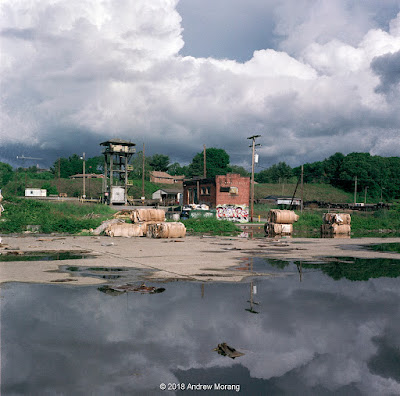Only a couple of hours south of the Washington, DC, urban sprawl (mess) is a gentle and historic land of farms, forests, and tidal rivers. The western shore of Chesapeake Bay is indented with rivers that separate three peninsulas, locally known as "necks." The Northern Neck is the northernmost of these three peninsulas, while the next two to the south are the Middle Peninsula and the Virginia Peninsula. Northern Neck is bounded by the Potomac River on the north and the Rappahannock River on the south.
The first European to see Northern Neck may have been Captain John Smith. In the winter of 1607–1608, he traveled up the Rappahannock River while a prisoner of the Powhatan tribe. The neck was settled by English settlers in the early 1600s. The land was well-watered and the winters mild compared to New England, leading to prosperous tobacco farms. African slaves were imported to provide labor for the farms. In the 19th century, the land gradually shifted to mixed grain and vegetable farming as well as timber and seafood. Today, vineyards and wine-tasting are a big business.
Although farming persists, the coasts have been developed with vacation (or year-round) homes for wealthy urbanites. I saw clusters of pretentious McMansions on the bluffs overlooking the Rappahannock River. But inland, there is still a feeling of a land that time forgot. Hundred-year-old farm houses, country stores, and small towns look sleepy. It is surprising considering that Washington is only two hours north (or 3 or 4 hours when the traffic is backed up).
 |
| Northern Neck, Virginia. Generated from ESRI ArcGIS Online. |
My wife and I drove to Farnham, near Warsaw, Virginia, to visit relatives in May of 2018. I explored a bit, and, of course, wish I had more time to check out-of-the way towns and farms. (Click any picture below or the map to enlarge it.)
 |
| Farmhouse, Farnham, Virginia |
 |
| Farmhouse, History Land Highway, Emerton, Virginia |
 |
| Cottage, History Land Highway, Emerton, Virginia |
I was surprised to see a large number of traditional farmhouses abandoned, often being engulfed with vegetation. Where did the former residents go?
 |
| Store, Mary Ball Road, Lively, Virginia |
 |
| Store or house, Mary Ball Road, Lively, Virginia |
The little town of Lively looked reasonably prosperous but had a number of old stores and buildings in various stages of abandonment of neglect.
 |
| Barber shop, Mary Ball Road, Lancaster, Virginia |
 |
Donaldson's Dodson's Garage, Lancaster, Virginia |
 |
| Resting in peace at the Farnham Garage |
The Farnham Garage - this was fun. The owner had a fantastic collection of older European cars and a few examples of Detroit iron. Some were in running condition, other were a bit "rough." He said he had driven all of them to the garage, but that may have been some years ago.
 |
| Abandoned silos, History Land Highway at Totuskey Creek, Warsaw, Virginia |
Some abandoned silos and the remains of a loading dock are at Totuskey Creek, just east of Warsaw on History Land Highway. More examples of industrial infrastructure are likely tucked away in the woods.
I previously wrote about the
country store of Farnham in a 2011 post (please click the link).
These photographs were taken on Fuji Pro400H film, a 20-year-old roll that had been in my freezer. I exposed it in a Rolleiflex 3.5E with 75mm f/3.5 Xenotar lens, with a Leitz polarizing filter on many frames. I used a Sekonic 318B light meter set at EI=320. I scanned the negatives with a Minolta Scan Multi film scanner operated with SilverFast Ai software.






























